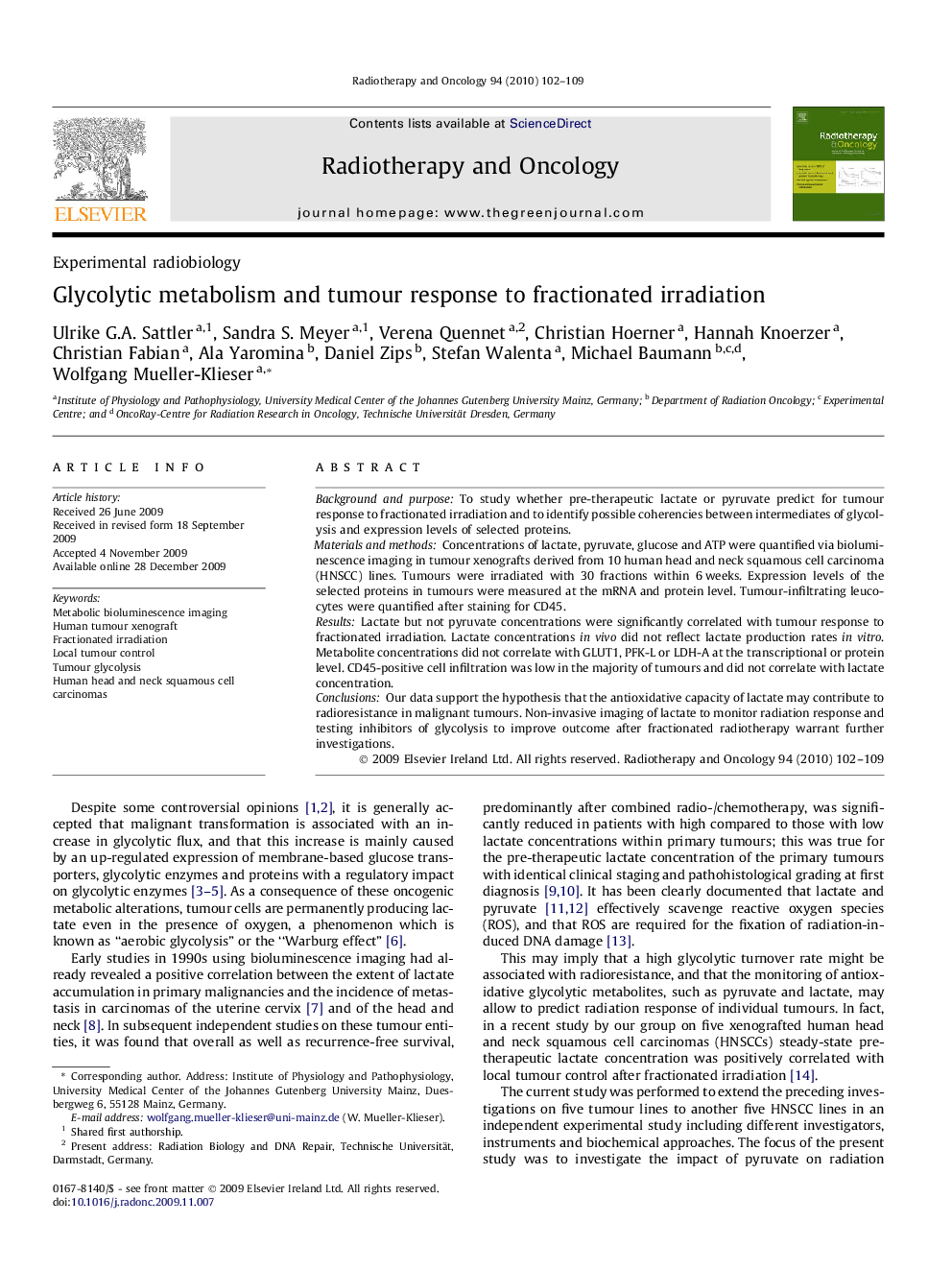| Article ID | Journal | Published Year | Pages | File Type |
|---|---|---|---|---|
| 2159533 | Radiotherapy and Oncology | 2010 | 8 Pages |
Background and purposeTo study whether pre-therapeutic lactate or pyruvate predict for tumour response to fractionated irradiation and to identify possible coherencies between intermediates of glycolysis and expression levels of selected proteins.Materials and methodsConcentrations of lactate, pyruvate, glucose and ATP were quantified via bioluminescence imaging in tumour xenografts derived from 10 human head and neck squamous cell carcinoma (HNSCC) lines. Tumours were irradiated with 30 fractions within 6 weeks. Expression levels of the selected proteins in tumours were measured at the mRNA and protein level. Tumour-infiltrating leucocytes were quantified after staining for CD45.ResultsLactate but not pyruvate concentrations were significantly correlated with tumour response to fractionated irradiation. Lactate concentrations in vivo did not reflect lactate production rates in vitro. Metabolite concentrations did not correlate with GLUT1, PFK-L or LDH-A at the transcriptional or protein level. CD45-positive cell infiltration was low in the majority of tumours and did not correlate with lactate concentration.ConclusionsOur data support the hypothesis that the antioxidative capacity of lactate may contribute to radioresistance in malignant tumours. Non-invasive imaging of lactate to monitor radiation response and testing inhibitors of glycolysis to improve outcome after fractionated radiotherapy warrant further investigations.
